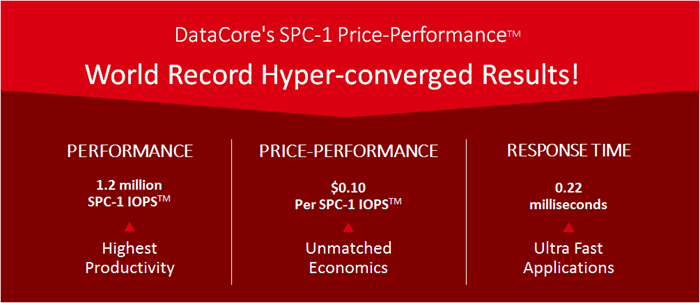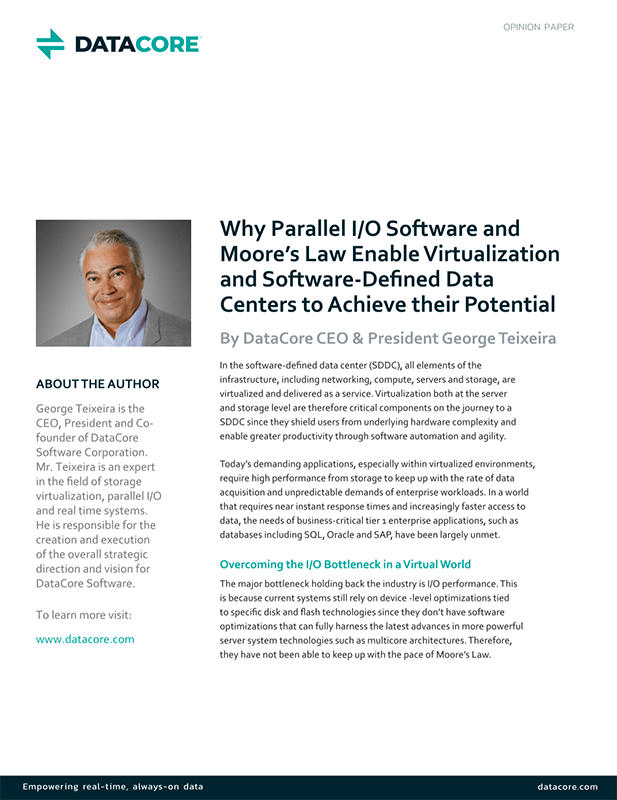I/O Bottleneck Leading to Slow Response? Speed It Up with Adaptive Parallel I/O
Top Reasons for Virtualizing Servers:
- Consolidate multiple workloads on a server using its multiple CPUs and large memory
- Isolate applications from hardware changes and failures so they run smoothly
Problem:
All workloads wait on one serial process for I/O (input / output), creating a bottleneck.
Pain Points:
- More servers required to spread the I/O load—fewer virtual machines (VMs) per server
- Apps run slower when virtualized
- Expected cost reductions don’t materialize
Why?
Hypervisors, operating systems and container virtualization treat I/O serially even though workloads are scheduled to run in parallel across several CPUs.


The Solution: Unlock the Full Performance of Your Servers with DataCore™ Parallel I/O Software
How: Process I/Os in parallel leveraging multi-core processor systems
Benefits: Do More with Less
- Far fewer servers needed (2 vs 10)*
- Apps run 10X faster**, even when virtualized – work completes in 1/10th the time
- Systems respond quicker without adding hardware
- Higher workload consolidation ratios – more VMs per server
- Costs decrease substantially, as does complexity
Proof: World record holder for Performance and Price-Performance

Product Availability: The Power of Parallel I/O is included in one of our products:
* Ratios depend on number of cores per CPU and I/O intensity of workloads
** TechValidate survey results of DataCore customers

